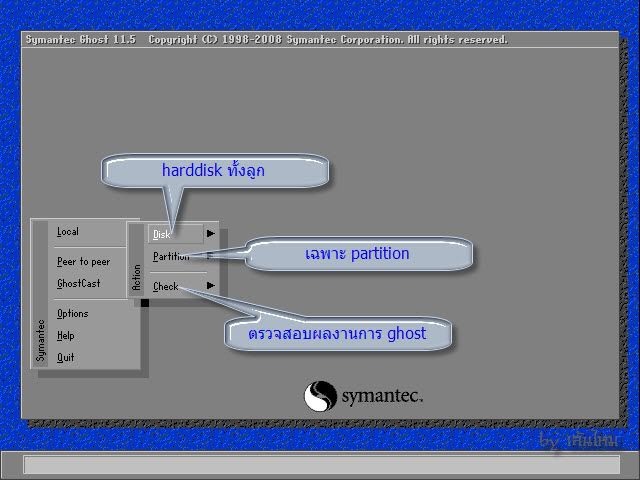Ghost 11 5 Exe Dos Download Microsoft

A Microsoft Network Client boot disk (also known as a Microsoft Client boot disk) is used to boot the computer to DOS, load the Network Interface Card drivers, load the Microsoft Client, and (optionally) load and run Ghost. The Microsoft Client is a set of files that enables the user to establish a connection between the local computer (client computer) and another computer on the Windows network by mapping a network drive. Automatically create a client disk To automatically create a Microsoft Client boot disk, choose the option Drive Mapping Boot Disk in Ghost Boot Wizard. This option is only available in enterprise Ghost versions, Symantec Ghost 6.5 and later.
Feb 4, 2019 - all of which can be used in Windows, PE and DOS environments to. Ghostexp.exe, Ghost Explorer used in Win32 environment. (for DOS/PE/WIN) and versions (v8.3, v11.0, v11.5, v12.0.0.xxxx) for Windows 32-bit and 64-bit. License, Use Environment, Version, Contained Tools List, Download, Size. Norton ghost 11 free download. Best backup apps for Windows and Mac Microsoft Office and top productivity alternatives Best online photo storage. Windows to reboot to DOS to run it. Ghost 7.5 creates a virtual partition, a DOS. 2.5 (Ghost 11.5) The ghost software. Create USB Boot Ghost 11.5; Dos Diskpart Command. Ghost Exe Download.
Create a client disk with Windows NT If you have a Windows NT Server, you can use the Network Client Administrator in the Administrative Tools to create the client disk. Directions for creating a client disk are included in the file. NWclient.zip includes the files NWclient.doc and NWclient.rtf, and the file can be uncompressed with PKZip. In addition, the Windows NT Network Client Administrator can create other types of Microsoft Client disks. These clients are also available from Symantec: • • • Create a Microsoft Client for MS-DOS disk If you are trying to connect to a Windows 95 workstation, you can use the Microsoft Client for MS-DOS.
To download, uncompress, and expand the files • Download the following two files by clicking their names: • • • Double-click DSK3-1.EXE to uncompress it. (After the files are uncompressed, the last character of the file will end with an underscore ( _ ) symbol, as shown in the left column of the table below.) • Double-click DSK3-2.EXE to uncompress it. The same file may be in DSK3-1.EXE and DSK3-2.EXE.
You get a message that a duplicate file exists and be asked if you want to overwrite it. If this happens, press 'n' on the keyboard when prompted to Overwrite. • Double-click Expand.exe located in the list of uncompressed files.
A DOS screen for the Expand.exe utility appears. • Type the first file name, as shown in the table below, after 'Compress file.'
The complete path to the file must be included. (For example, if the uncompressed file is located in C: Temp, the complete path will be 'C: Temp EMSBFR.EX_'.) • Type the expanded file name, as shown in the table below, after 'Expanded file.' (For example, Emsbfr.exe.) Be sure to type in the complete path to the destination folder. Baca komik karya tony wong. • Repeat steps 4 through 6 for each file identified in the following table. File names when compressed File names when expanded. UMB.COM Three other files are needed. The files are Emm386.exe, Himem.sys, and Wfwsys.cfg.